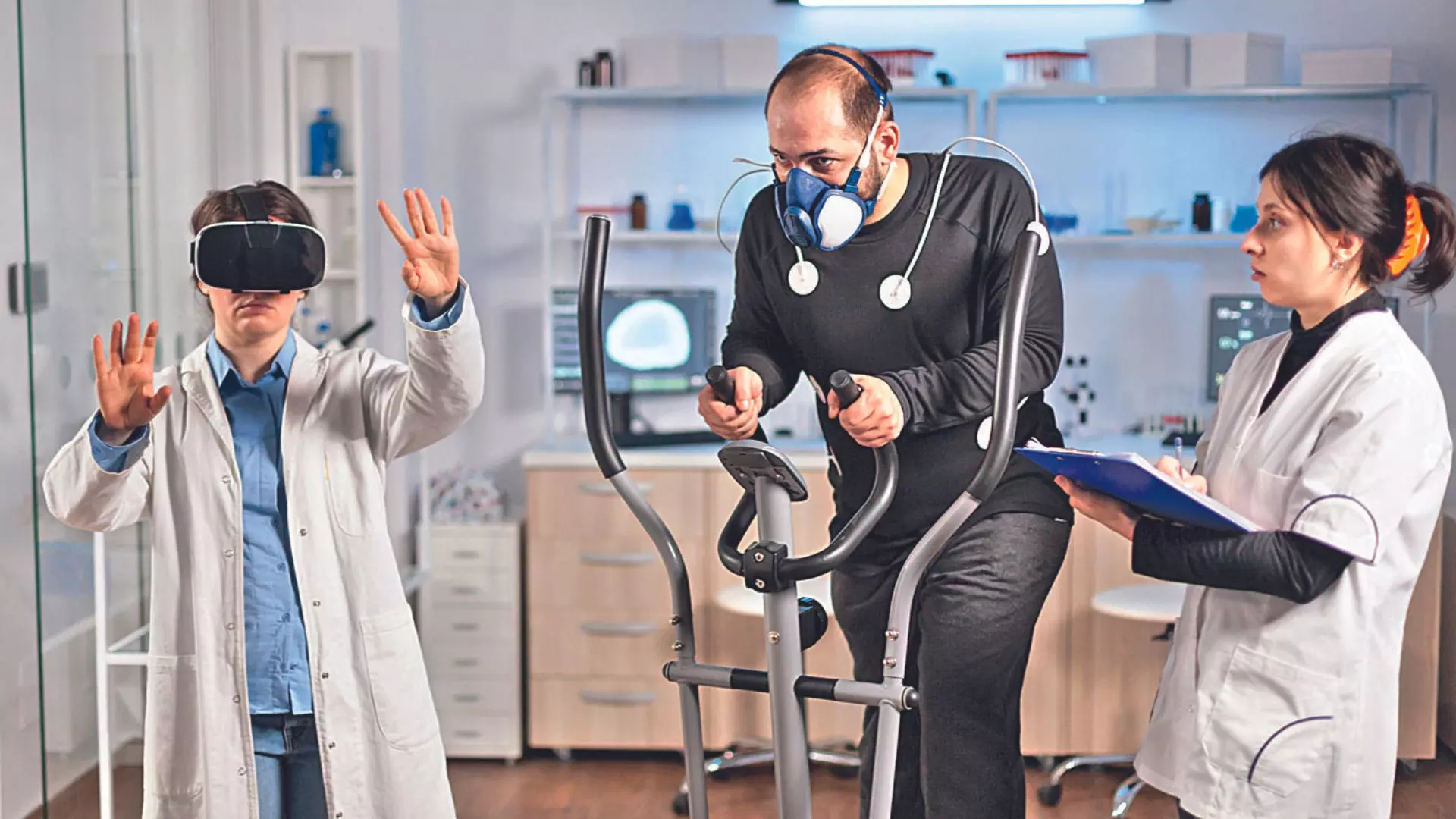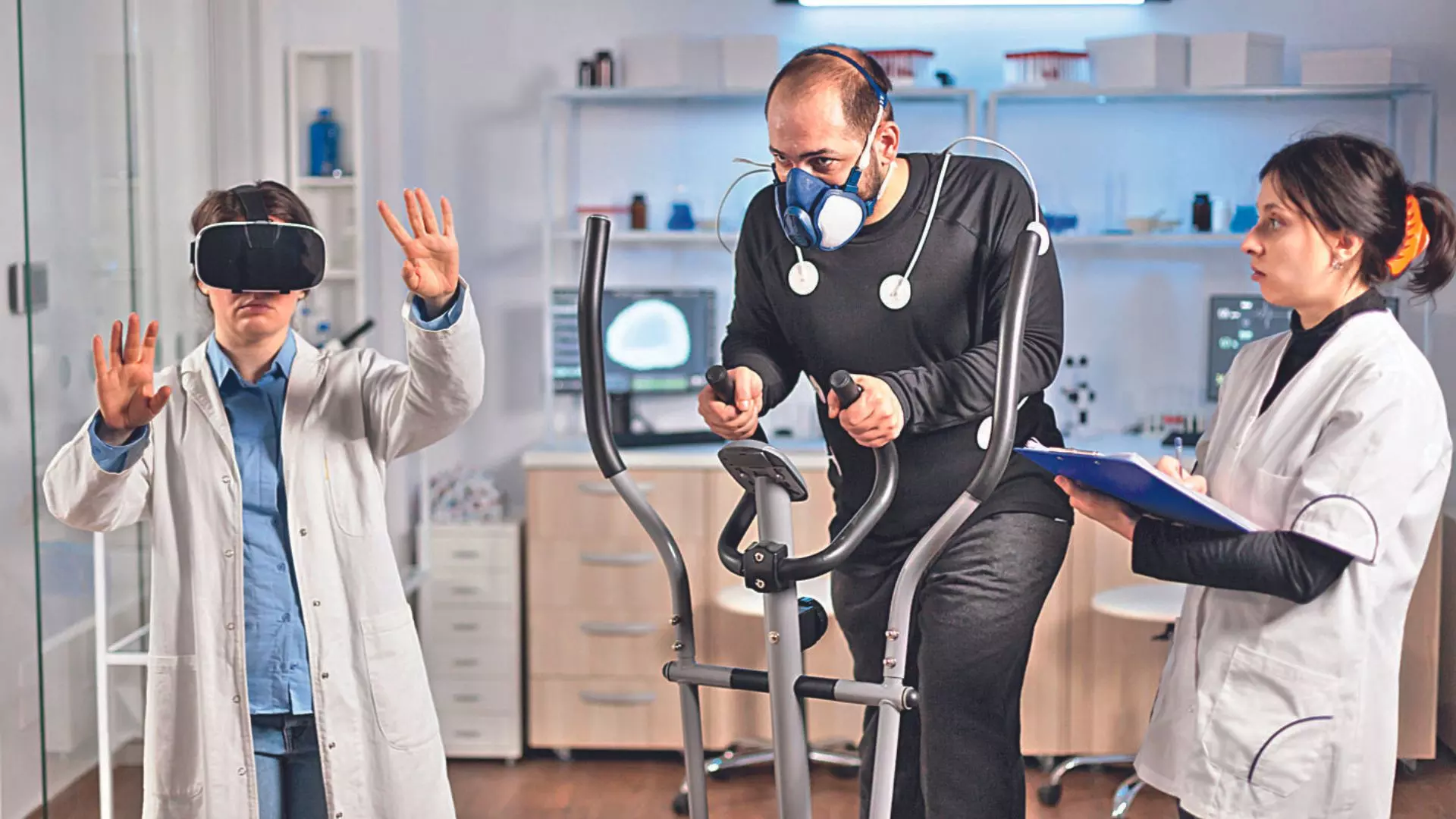
Imagine your fears and anxieties come to life in stunning 3D. With Virtual reality (VR) therapy, tackling phobias and managing stress are as interactive and futuristic as your favourite game. Recent studies spotlight the promise of virtual reality (VR)-based cognitive behavioural therapy (CBT) for mental health treatment.
VR can make daunting experiences feel more manageable by removing real-world risks. For example, someone with a phobia might not be ready to face it in real life, but interacting with a VR simulation can help them gradually become accustomed to their fear and realize it’s not a threat. In this way, VR can bridge the gap between therapy and reality. “The risks of virtual reality are that it cannot guarantee that real-world outcomes will be the same; it’s a tool to help patients work through their issues,” says Dr. Jasdeep Mago Jethani, a neuropsychologist, psychotherapist, and relationship coach from Mumbai.
Study Findings
A 2023 study published in the Indian Journal of Psychological Medicine explored VR-based CBT for depression and anxiety in India. This study, involving 50 participants, found that VR-based CBT led to a 40% reduction in depression symptoms and a 35% reduction in anxiety symptoms, compared to 30% and 25% reductions with traditional CBT. The VR group also showed higher engagement and satisfaction, with a 95% attendance rate for sessions compared to 85% in the traditional group. Despite some technical hiccups, the study highlights VR therapy’s potential and calls for more research to explore its broader applications.
VR Therapy
Virtual Reality involves fully immersing the patient in a virtual environment using a headset with LED screens. Unlike traditional therapy, VR therapy offers a unique, engaging way to address issues by placing patients in specially designed virtual worlds. These environments can be tailored to help with specific goals like overcoming fears, promoting relaxation, or learning new skills.
Rosanne Fortez, an MBBS student says VR therapy allows patients to confront and work through their challenges in ways that traditional methods can’t always achieve. So far, VR therapy has shown promise in treating social anxiety, severe phobias, autism, and social awkwardness. By providing a dynamic and controlled space for patients to engage with their concerns, VR therapy offers a fresh and effective approach to mental health treatment.
Mental Health
VR therapy provides an engaging and focused environment that’s particularly useful for exposure therapy and cognitive-behavioural techniques. By simulating real-life triggers or stressors in a controlled setting, it’s especially effective for treating phobias, PTSD, and anxiety disorders. This approach helps avoid overwhelming patients and allows for immediate, tailored therapeutic interventions.
Sahil Singh, CTO of Twin Reality Technologies LLP in Bengaluru says that for many, VR therapy for the first time can be overwhelming. “Some report sweating and nausea due to how real everything feels,” Singh says.
Therapists can customize VR environments to meet each patient’s unique needs and preferences, making therapy more personalized and effective. Data from VR sessions also helps therapists track progress and adjust treatments as needed. The inclusion of gamification and interactive elements keeps patients motivated and engaged, offering a refreshing alternative to traditional therapy. “The therapist needs specific training to understand and utilize the data effectively to assist the patient,” Dr Jethani adds.
Gen-Z, familiar with rapid technological advancements, is highly receptive to new tools like VR. VR offers a sense of presence and involvement, allowing Gen Z to explore virtual worlds, engage in interactive scenarios, and receive real-time feedback. This personalization enhances user satisfaction, making VR a valuable tool for managing stress, anxiety, and other mental health issues. VR-based relaxation exercises, mindfulness practices, and therapeutic simulations offer a proactive approach to mental health care. Tech enthusiast Joel Fernandes notes, “VR therapy is a step up from traditional methods. It’s interactive and immersive, which helps me stay focused. It might be new, but it feels like the future of mental health care.”
Different Views
VR and traditional therapy each offer unique benefits. VR therapy provides an immersive, interactive experience that feels more like a video game, allowing patients to engage with virtual scenarios that mimic real-life situations. This can make it easier to address specific issues, like phobias or anxiety. However, the high initial cost of VR equipment can be a barrier, and not everyone has easy access to this technology. Traditional therapy, on the other hand, involves face-to-face interactions in a real-world setting, which many find comforting and straightforward. It’s generally more accessible since it doesn’t require special equipment. However, it may not offer the same level of engagement or customization as VR. “VR has proven effective for treating phobias and anxiety-related issues. But we still don’t fully understand its potential uses. It’s too early to predict possible issues like dependence, isolation, or loneliness,” says Dr Jethani.
While traditional therapy remains effective for various mental health conditions, it might lack the interactive edge that VR brings. VR therapy provides a fresh, tech-savvy approach that resonates with younger generations, while traditional therapy offers a more personal touch that many still find invaluable. “With VR, we’re able to create highly personalized treatment scenarios that are difficult to achieve with traditional methods, enabling a more tailored approach to mental health care,” adds Singh.
Challenges Ahead
VR therapy faces several challenges, including high equipment costs, infrastructure needs, and technical limitations. The cost of VR gear, such as headsets and software, can be prohibitively high in low-resource settings where mental health funding
is limited. The infrastructure required for VR therapy, including reliable internet access, may not be available everywhere, affecting its widespread adoption. Technical issues like software bugs, hardware malfunctions, and frequent updates can disrupt sessions and impact the user experience. Comfort and user experience are crucial, as issues like motion sickness can limit VR’s effectiveness. “While VR therapy offers innovative solutions, it might not be ideal for stress relief. The headset, weighing around 300 grams, can become uncomfortable after prolonged use, and viewing two screens simultaneously might even increase stress for some users,” Singh explains. As technology advances, VR therapy could become a key tool in mental health treatment, providing new possibilities for effective care.
Interesting Facts
50 participants found VR-based CBT led to a 40% reduction in depression symptoms (Indian Journal of Psychological Medicine)
35% reduction in anxiety symptoms compared to 30% and 25% reductions with traditional CBT
The risks of virtual reality are that it cannot guarantee that real-world outcomes will be the same; it’s a tool to help patients work through their issues.” — Dr. Jasdeep Mago Jethani, neuropsychologist, psychotherapist, and relationship coach, Mumbai
For many, experiencing VR therapy for the first time can be overwhelming, with some reporting sweating and nausea due to how real everything feels.” — Sahil Singh, CTO, Twin Reality Technologies LLP, Bengaluru
